Published 12/01/2017
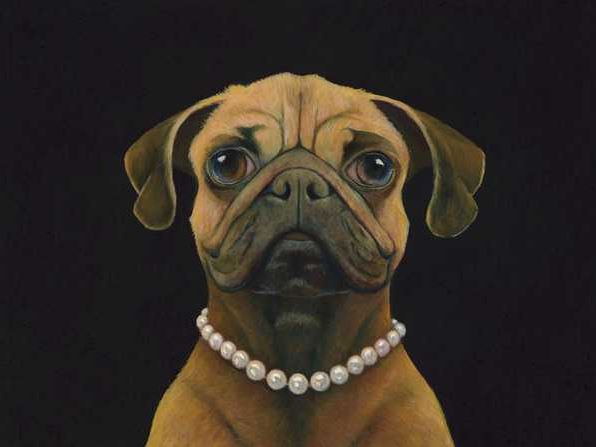
I was six years old and visiting the Sunderland Museum with my Mam and Dad. The work was The Castle at Ischia by Clarkson Stanfield (1793-1867). Stanfield was a local man, a friend of Charles Dickens. Stanfield's mother taught him to paint; he did dramatic seascapes and was arguably the best sea painter of his time, second only to his more illustrious colleague J.M.W. Turner. He also worked on scenery for theatre which shows he was able to move beyond the borders of a canvas. I loved the painting when I first saw it and I still love it now; it is romantic and so evocative of the drama of the sea and coast. It brings to mind the lives of my sailor ancestors, local hero Jack Crawford – the man who is credited for literally nailing his colours to the mast - and the history of Sunderland as a historically important shipping town.
You are based in rural Northumberland - How does the landscape around you inform and shape your work today?
My studio, like many other buildings in our village, is made in part from stones ‘repurposed’ from Hadrian’s wall. Northumberland, with its big skies and rapidly shifting dramatic light, is in the contested borderlands between England and Scotland: a problematic land considered ungovernable by kings. Cromwell is supposed to have stayed overnight in the house next door though they have changed the bedding since then! In my work, I refer to both the Border Reiver (Reivers are the community who lived by raiding in the 13th to 17th centuries) heritage of bringing animals indoors to keep them safe and, with the flock wallpapers and furnishings, to the natural landscape and the many castles and grand houses still occupied by descendants of the original owners.
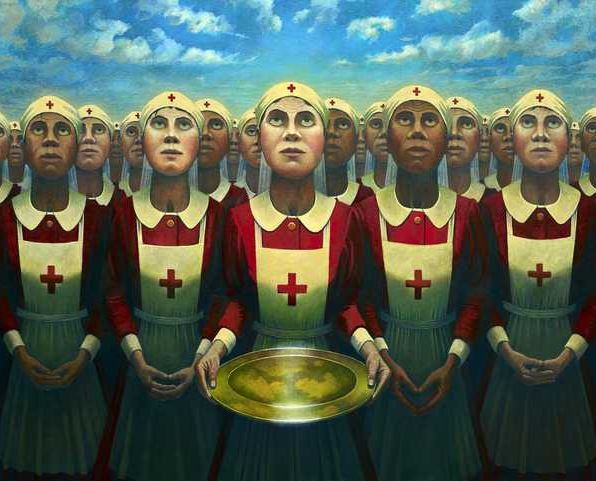
Talk us through your creative process. Where do you begin?
I always begin with the overarching narrative of the series and work on a number of canvasses at the same time. I think of the work as a collection of ideas about a coherent and deeply realised world, with a clear thread linking the pictures and subjects together thematically, rather than as one-off paintings. At the start of a new series, I stretch and prime all my canvasses. This means I can control the surface and watch the narratives develop ‘in conversation’ with each other. Recently, I found a stock of poplar board in an art shop in Rome and I have really enjoyed working with what is for me a new medium. I have also been experimenting with larch balsam so the Home Alone series has been realised with very traditional techniques and natural materials that were used by the masters and are now being rediscovered by contemporary artists, like me.
What is your favourite time of day to be in your studio?
I really like the evening hours between seven and eleven, particularly in the autumn when the light is fading and it is chill enough to light the fire. I find it easier to focus when all the doings of the day are done with and I’m less likely to be disturbed by emails, phone calls or hunger pangs. I can get into a relaxed frame of mind listening to plays or music on the radio and the time passes very productively.
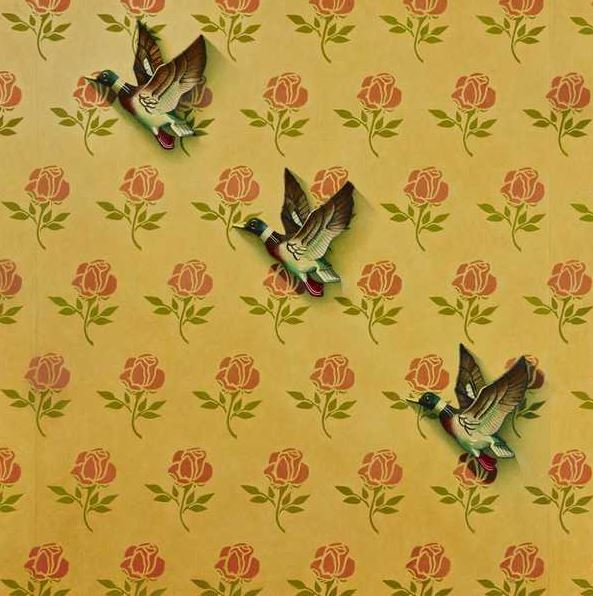
What convinced you to join Bridgeman Studio for licensing and what would you most like to see your images licensed for?
I know two Jonathan Cooper Gallery artists have joined the studio and I was interested to find out if this was something suited to my work. I have been very impressed with the way in which artists are supported to join the studio and I’m excited to see where my work may appear. As a child I used to collect records and read so it would be nice to be on an album or book cover. I’d love to see one of my images somewhere culturally very different from where they were made and on a large scale: imagine my ducks flying up the outside wall of a sky-scraper - now that would be truly exciting!
You are about to have an exhibition –‘Home Alone’ at the Jonathan Cooper Gallery, which must be incredibly exciting - Could you tell us a bit more about what inspired the series of work for the show?
This will be my second show with Jonathan and I’m very excited to see what his clients and the public make of the Home Alone series. The gallery is in such a great location in Chelsea and we northerners tend to arrive en-mass and make a special event of the preview evening. The collection was inspired by many different things I believe about the relationships between humans and animals and how they adapt to domesticity. Dogs have been a constant in my life and while I do not consider myself a ‘dog’ painter, I have really enjoyed spending the past two years thinking about their presence in the world and how they impact on our lives.
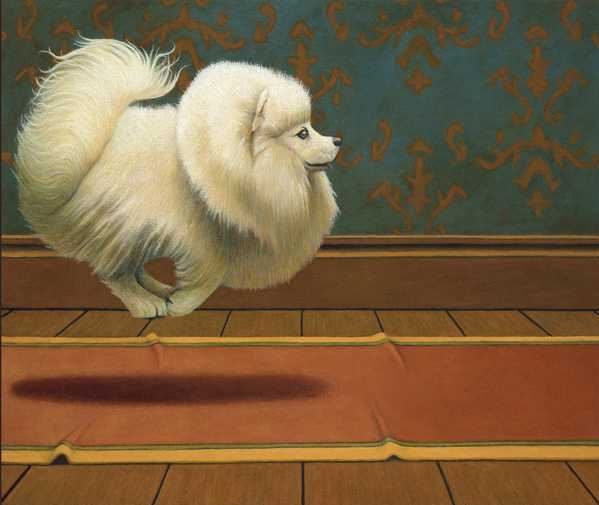
How would you sum up your practice in 5 words?
Disciplined, Layered, Playful, Detailed and Narrative-rich.
What artwork or project are you most proud of and why?
One summer, when I was 26, I won an Arts Council Travel Award. I went to Siena to an artist residency to watch and study the Palio (a horse race considered to be the oldest in the world, stretching back to medieval times). The colours and the passion really blew me away and I filled sketch book after sketch book with drawings and notes. I learned such a lot about how to build affective narratives with layers of meaning and symbolism. I exhibited the paintings created from these sketchbooks in Grey’s Art Gallery in Hartlepool the following year. The collection of paintings were very literal and slightly under realised but I think the drawings I did over that period are some of my best work. What I learned in Italy has stayed with me for a long time – decades even - and I’m sure that one day I will go back to Siena and experience the Palio again as a more mature artist.
What three things would you take if you were cast away on a desert island?
A very large telescope, to look at the stars. I like the idea that looking up is also looking back in time. I’d spend the nights contemplating the hugeness of it all.
The Real Goods Solar living Sourcebook, It’s a very practical guide to sustainable living on a desert island and it would help me understand the flora and fauna of the island so that I’d know what to eat, which animals and insects to make friends with and which to run away from!
An ever-lasting supply of artists’ pigments, I could experiment and play with painting on different surfaces, which would help me to make pictures and carry on responding to the world around me.
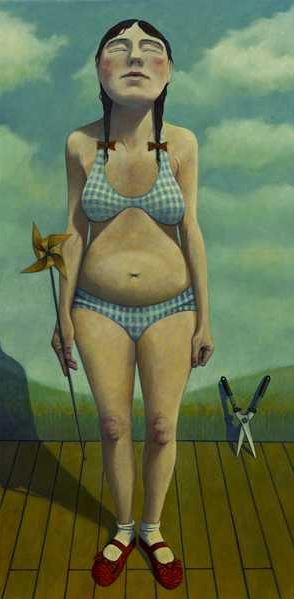
|
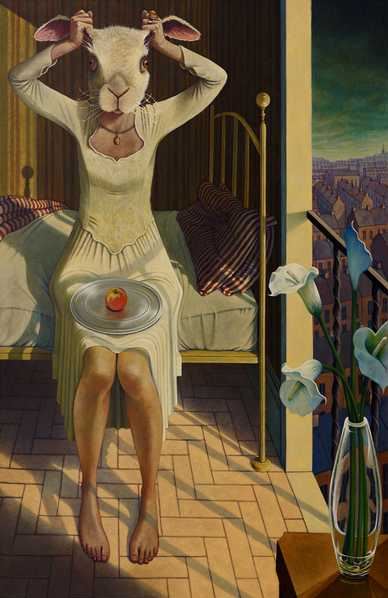
|
If you could pick 5 artists, dead or alive, to have dinner with who would they be and why?
I’d want people who would really energise the evening with conversation and ideas – I wouldn’t mind if the evening got a little feisty. Looking at the list, I think my guests would enjoy each other’s company – they are so different but alike in their belief in the importance of art and the contribution of the artist to our cultural world.
Frida Khalo would be my first guest. She lived an amazing, politically engaged life and put it all into her fantastic paintings.
Michelangelo Merisi (known as Caravaggio), his sense of drama and the mystery of his life (and death) would make him a lively guest. I’d love to know how he produced and lit his astonishing compositions, amongst numerous other questions.
Paula Rego is next, she would bring a playful, if rather dark, child’s eye view to dinner – perhaps she could tell us fairy stories after coffee -and psychoanalyse Caravaggio and Bosch for our entertainment!
Hieronimus Bosch, I’d really like to introduce him to Indian food and find out more about the content, context of his work and how he achieved the amazing detail I witnessed in the recent exhibition in Den Bosch.
Wes Anderson, the film director would be my final guest. I expect he would keep the peace, lighten the mood and maybe he’d make a subtly surreal and amusing film of the whole event!
Find out More
View all images by Gavin Watson in the archive.
Gavin Watson: Home Alone will be exhibiting at the Jonathan Cooper Gallery from 2 - 25 Feb 2017.
Get in touch for licensing or commission queries at uksales@bridgemanimages.com


